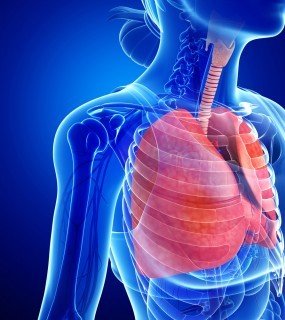Anyone who has ever suffered from pulmonary fibrosis knows just how scary and anxiety-inducing the experience can be.
People with pulmonary fibrosis often experience shortness of breath with movement or even at rest, and the feeling of struggling to breathe and tightness in the chest can be uncomfortable and overwhelming at the best of times.
However, for those who have been diagnosed with pulmonary fibrosis, there is good news. Doing breathing exercises can make it easier to breathe, reduce distress and discomfort and promote the overall health of your lungs.
Lung and breathing exercises are the single most important ways you can take your pulmonary fibrosis diagnosis into your own hands and take control of your treatment for better health.

These six exercises have been recognized by physicians, respiratory therapists and other health professionals as being the most effective ways to breathe easier and improve lung health for people with pulmonary fibrosis.
1) Diaphragmatic Breathing
Also known as belly breathing, the diaphragmatic breathing technique is among the most effective at slowing the breathing pattern and making the breaths you take deeper and more thorough.
The diaphragm is the large muscle that underlies the rib cage. When you breathe, the diaphragm initiates the movement of the rib cage and chest. Activating the diaphragm when you breathe is a good way to pull more air into the lungs when you inhale and push more air out when you exhale.
To practice belly breathing, try lying on your back with one hand on your chest and one hand on your abdomen. As you breathe in, move your abdomen so that the hand lying on it is raised above the hand that is resting on your chest; as you breathe out, the hand on your abdomen should fall, so both hands are back on the same level.
For best results, try a few minutes of belly breathing first thing in the morning before you get out of bed and a few minutes after you get into bed at night before falling asleep. With time, belly breathing becomes a natural pattern you will use without intentionally trying to do so.
2) Deep Breathing
Deep breathing and coughing is a respiratory exercise that is beneficial for all types of chronic lung conditions, including pulmonary fibrosis.
Deep breathing helps to move air down into the very bottom of your lungs, which helps improve oxygenation and reduce the sensation of shortness of breath. It also improves blood flow into this area of the lung tissue and prevents the air sacs inside the lungs from collapsing.
Lung exercises that include deep breathing are best performed in an upright seated position, with the neck in a neutral spinal posture. Concentrate on elongating each breath, working your way up to an inhale and exhale of six to eight seconds each. Focus on the sensation of your chest expanding outwards and to the side with each inhale and moving inwards on the exhale.
Not only is deep breathing a fantastic exercise for improving lung health and oxygenation in pulmonary fibrosis, but it also works well to reduce the anxiety and fear that so often come with the sensation of being unable to breathe properly.
3) Pursed Lip Breathing
Pursed lip breathing is almost always recommended by healthcare professionals who work in a respiratory setting — and with good reason. This simple but effective exercise opens the airway, improves your lung capacity and maintains adequate oxygenation.
To do pursed lip breathing, breathe in slowly through your nose and then exhale forcefully out your mouth through pursed lips, almost as though you were blowing out some candles on a birthday cake. Try for an exhale of at least three seconds and lengthen the exhale as you become more experienced with this exercise.
For best results, try at least three sets of five pursed lip breaths at least once per day. You can also try this exercise any time you start to feel short of breath with movement or activity, as it will naturally force you to take slower and more effective breaths.
4) Using an Incentive Spirometry Machine
If you have spent any amount of time in the hospital since being diagnosed with pulmonary fibrosis, chances are you were given an incentive spirometer to use while in the hospital or upon discharge.
An incentive spirometer contains a clear plastic chamber containing one or more balls with an attached mouthpiece. To use an incentive spirometer, first inhale, then bring the mouthpiece to your mouth, attach your lips to the mouthpiece, and breath out as forcefully and for as long as you can. Depending on your lung capacity and strength, you may be able to move the plastic balls further up in the chamber.
You can work with your doctor, nurse or respiratory therapist to set goals regarding incentive spirometry use, lung capacity and how frequently you should be using your spirometer.
5) Huff Coughing
Huff coughing is used for people with pulmonary fibrosis and other restrictive lung diseases to improve their lung health and ability to ventilate and oxygenate effectively. It also reduces the burden of coughing: Because people with pulmonary fibrosis frequently cough to the point of fatigue and exhaustion, using this technique to cough more effectively can reduce this occurrence.
To huff cough, seat yourself in an upright position. Breathe in and out gently for a few breaths, then on an exhale, force all the air out of your lungs as you whisper the word “huff” several times in repetition or until there is no more air left to be expelled from your lungs.
With sustained use of huff coughing in place of your regular coughing technique, you may notice decreased fatigue and increased energy in addition to a reduced overall need to cough as frequently.

6) Meditation and Visualization
Although not a true breathing exercise in any sense, meditation and visualization are two techniques that help thousands of patients suffering from pulmonary fibrosis. These techniques improve breathing, decrease anxiety, clear the head and put your mind at ease as well.
There are hundreds of tutorials on mediation and visualization available on the internet, and you will likely have to try out a few to find a strategy that works best for you. To start out, try paying attention to your inhalations and exhalations without trying to change them, and focus your mind on a location you find relaxing or pleasing to think about.
By using these six techniques every day, you will be well on your way to easier breathing and healthier lungs.
Want to know more?
Not many people know this, but your mouth can be a giveaway on how you sleep. Dr Emile Cahi, a prosthodontist, and Dr Craig Pearl, a maxillofacial surgeon, explain how your mouth and dental status could affect the quality of your sleep.



![women [longevity live]](https://longevitylive.com/wp-content/uploads/2020/01/photo-of-women-walking-down-the-street-1116984-100x100.jpg)










